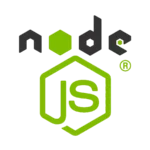Hire remote GraphQL developers that you can trust
Hire GraphQL developers from a unique network of 50,000+ pre-vetted offshore talents from Europe and Latin America, looking for a full-time contract. YouTeam developers stand apart for their ability to think like product managers and act like software architects. We also manage everything, so there’s zero overhead for your company.
Hire developers165 best GraphQL developers for hire on YouTeam in January 2025

Aisha
Senior Full-Stack Engineer
Dmytro
Senior Front-End Engineer
Viacheslav
Lead PHP Developer
Dmitry
Senior Full-Stack Developer
Romulo
Software Engineer
Jose Alberto
Full-Stack Developer
Oleh
Senior Full-Stack Developer
Pablo
Full-Stack Developer
Eugene
Full-stack JS/TS engineer
Mykola
Senior Full-Stack DeveloperStart hiring to
see all talent
Hire
developers

Best Developer
Senior Full-Stack DeveloperTrusted by Fortune 500 companies and Y Combinator startups
Why hire GraphQL developers with YouTeam
 48-hour personalized matching
YouTeam handpicks the best-matched candidates.
48-hour personalized matching
YouTeam handpicks the best-matched candidates.
 Zero overhead
Locally-compliant contracts and billing
Zero overhead
Locally-compliant contracts and billing
 Dedicated white-glove support
Dedicated white-glove support






How to hire GraphQL developers with YouTeam
Share your requirements Set up a quick call with one of our Matching Experts — your dedicated contact at YouTeam.
Undergo Personalized Matching Your Matching Expert curates a candidate list, conducts pre-interviews, and ensures a perfect match for your needs—covering developers' skills, tech stack preferences, interests, and personality.
Meet the right candidates Review a list of candidates screened specifically for your request and pick the best for the interview stage. Average interview-to-hire ratio on YouTeam platforms: 1.75.
Hire and work with confidence YouTeam automates contract signing and invoicing through its secure system. Your dedicated Matching Expert stays with you throughout the collaboration with contractors.

Find developers skilled in related technology
More technologiesRead about GraphQL on our blog
 A Complete Guide to Hiring a Back-End Developer in 2024
A Complete Guide to Hiring a Back-End Developer in 2024
Svetlana Shevchuk
 Web Development Outsourcing: A Complete Guide for 2024
Web Development Outsourcing: A Complete Guide for 2024
Artem Vasin
About GraphQL
- What is GraphQL?
- Exploring GraphQL applications
- Essential tools for GraphQL developers
- What is the role of a GraphQL developer?
- GraphQL developer experience levels
- Tasks and responsibilities of a GraphQL developer
- Skills to look for in a GraphQL developer
- Types of GraphQL developers: freelancers, in-house engineers, or outsourced developers
- How to write a GraphQL developer job description?
- GraphQL developer hard skills assessment questions
GraphQL is a query language for APIs and a runtime for executing those queries with existing data. Developed by Facebook in 2012 and released as an open-source project in 2015, GraphQL allows clients to request specific data structures rather than receiving fixed responses from the server. This flexibility enables more efficient data fetching, as clients can retrieve only the data they need in a single request. GraphQL also supports real-time updates through subscriptions, making it a powerful alternative to RESTful APIs for building modern web and mobile applications.
GraphQL is widely used for building APIs that allow developers to interact with data in a more efficient and flexible manner. Here are some key applications:
1. Data Retrieval: GraphQL enables clients to request exactly the data they need, reducing over-fetching and under-fetching of information. This makes it particularly useful for mobile applications and web apps that need to optimize performance.
2. Single Endpoint for Multiple Resources: Unlike REST APIs that require multiple endpoints for different resources, GraphQL operates through a single endpoint, simplifying API management and reducing the complexity of data interactions.
3. Real-Time Data with Subscriptions: GraphQL supports real-time updates through subscriptions, allowing clients to receive immediate notifications about data changes. This feature is beneficial for applications that require live data, such as chat applications or collaborative tools.
4. Versionless API: With GraphQL, clients can evolve independently of the server. Changes to data requirements can be accommodated without creating new versions of the API, fostering smoother and more efficient development cycles.
5. Type Safety and Documentation: GraphQL uses a strong type system, which helps in defining the shape of data and provides clear documentation. This enhances developer experience and reduces errors during API integration.
Here are some essential tools for GraphQL developers that enhance productivity and streamline the development process:
1. Apollo Client: A popular library for managing GraphQL data in client applications. It simplifies data fetching and state management, enabling developers to work with local and remote data seamlessly. Apollo Client also offers built-in caching and support for subscriptions.
2. Apollo Server: A community-driven, open-source GraphQL server that works with various Node.js frameworks. Apollo Server makes it easy to set up a GraphQL API with features like schema stitching, performance tracing, and middleware integration.
3. GraphQL Playground: An interactive development environment that allows developers to explore and test GraphQL APIs. It provides a user-friendly interface for sending queries, viewing responses, and documenting the API, making it a valuable tool for both development and testing.
4. GraphiQL: A powerful in-browser IDE for exploring GraphQL APIs. It offers features like syntax highlighting, query auto-completion, and documentation exploration, helping developers write and test queries efficiently.
5. Hasura: An open-source engine that connects to databases and provides a real-time GraphQL API out of the box. Hasura simplifies the process of creating GraphQL backends, allowing developers to focus on building applications without worrying about server-side logic.
6. Postman: While traditionally used for REST APIs, Postman has added support for GraphQL, making it a versatile tool for testing and documenting GraphQL APIs. Developers can send queries, view responses, and organize requests in a collaborative environment.
7. Relay: A JavaScript framework developed by Facebook for building data-driven React applications using GraphQL. Relay provides powerful features like automatic data fetching, pagination, and data normalization, allowing developers to create efficient and scalable applications.
8. Prisma: A next-generation ORM that simplifies database access and integrates seamlessly with GraphQL. Prisma allows developers to define data models in a declarative way and generate a GraphQL API, streamlining the backend development process.
A GraphQL developer plays a crucial role in designing, implementing, and maintaining GraphQL APIs that facilitate efficient data communication between clients and servers. Their responsibilities encompass a variety of tasks:
1. API Design and Schema Development: GraphQL developers are responsible for defining the API schema, which outlines the types, queries, and mutations available to clients. They ensure that the schema is well-structured and meets the application’s data requirements.
2. Data Fetching and Integration: They implement data-fetching logic that allows clients to retrieve only the required information. This involves integrating with various data sources, such as databases, REST APIs, or third-party services, and optimizing queries for performance.
3. Performance Optimization: A key aspect of a GraphQL developer’s role is to analyze and optimize query performance. They utilize techniques such as query batching, caching, and pagination to enhance API responsiveness and minimize server load.
4. Collaboration with Frontend Developers: GraphQL developers work closely with frontend teams to understand their data needs and provide the necessary queries and mutations. This collaboration helps ensure that the API delivers a seamless experience for end-users.
5. Security and Authentication: They implement security measures to protect sensitive data and ensure secure access to the API. This includes setting up authentication mechanisms, validating incoming requests, and managing permissions.
6. Testing and Documentation: GraphQL developers are responsible for writing tests to ensure the reliability and correctness of the API. They also create comprehensive documentation that outlines the API’s functionality, making it easier for other developers to use and understand.
7. Continuous Improvement: As technology evolves, GraphQL developers stay updated with the latest trends and best practices in the GraphQL ecosystem. They continuously refine and enhance the API to improve its efficiency and usability.
When looking to hire GraphQL developers, it’s important to understand their experience levels. Here’s a breakdown of the three types of GraphQL developers based on their experience:
Junior GraphQL Developers
- Experience: 0 to 2 years.
- Skills: Basic knowledge of GraphQL APIs, familiarity with data systems, and proficiency in at least one programming language (e.g., Python, PHP, JavaScript, TypeScript).
- Role: Junior developers work alongside more experienced team members, gaining knowledge and improving their software development skills. Companies looking to hire junior GraphQL developers should expect them to handle basic tasks while learning and growing under the guidance of senior developers.
Mid-Level GraphQL Developers
- Experience: 2 to 5 years.
- Skills: A deeper understanding of GraphQL, intermediate expertise in databases and data systems, and proficiency in at least one programming language. They should be capable of contributing independently to projects.
- Role: Mid-level developers can provide solutions and improvements to projects. When hiring mid-level GraphQL developers, expect them to manage tasks independently while also collaborating with teams to meet project requirements.
Senior GraphQL Developers
- Experience: 5+ years.
- Skills: Extensive experience in API development, microservices architecture, and cloud platforms (e.g., AWS, Google Cloud, Microsoft Azure). Senior developers are also proficient in multiple programming languages and frameworks (e.g., Angular, React, Spring Boot).
- Role: Senior GraphQL developers often lead development teams, mentor junior developers, and manage complex projects. When you hire senior GraphQL developers, they bring strong technical expertise, leadership skills, and the ability to oversee the entire API development process.
Whether you need to hire dedicated GraphQL developers or freelance GraphQL developers, understanding these experience levels will help you match the right developer to your project needs.
Here are the key tasks and responsibilities of a GraphQL developer:
1. Designing GraphQL Schemas: GraphQL developers create and maintain schemas that define the structure of the API. This includes specifying types, queries, and mutations to represent the data model effectively.
2. Implementing Resolvers: They write resolvers to handle queries and mutations, linking the schema to the data sources. This involves writing the logic that fetches, processes, and returns data in response to client requests.
3. Integrating Data Sources: GraphQL developers integrate various data sources, such as databases, REST APIs, or third-party services. They ensure smooth data retrieval and manipulation, optimizing interactions between the API and these sources.
4. Optimizing API Performance: They analyze and optimize API performance by implementing techniques such as query batching, caching, and pagination. This helps minimize server load and improve response times for clients.
5. Implementing Security Measures: Ensuring the security of the API is crucial. GraphQL developers implement authentication and authorization mechanisms, validate incoming requests, and manage data access permissions to protect sensitive information.
6. Testing and Debugging: They write unit tests and integration tests to verify the functionality and reliability of the API. When issues arise, developers debug and resolve them efficiently to maintain a smooth user experience.
7. Documentation: Creating and maintaining documentation is essential for developers. They document the GraphQL schema, queries, and mutations, providing clear guidelines for other developers and stakeholders who interact with the API.
8. Collaborating with Frontend Teams: GraphQL developers work closely with frontend developers to understand their data needs and ensure that the API effectively supports the application’s user interface. This collaboration helps create a seamless integration between the frontend and backend.
9. Staying Updated with Trends: Given the rapidly evolving nature of technology, GraphQL developers stay informed about the latest developments, tools, and best practices in the GraphQL ecosystem. This knowledge allows them to continuously improve their skills and the quality of their work.
10. Mentoring Junior Developers: Experienced GraphQL developers often take on mentorship roles, guiding junior team members in best practices, code quality, and effective use of GraphQL technologies.
When hiring a GraphQL developer, it’s essential to assess a combination of technical and soft skills that ensure they can effectively design, implement, and maintain GraphQL APIs. Here are the key skills to look for:
1. Proficiency in GraphQL: A strong understanding of GraphQL syntax, principles, and best practices is crucial. The developer should be familiar with defining schemas, queries, mutations, and subscriptions.
2. Experience with API Development: Knowledge of RESTful APIs and how they compare to GraphQL is beneficial. The developer should understand API design principles and have experience building and maintaining APIs.
3. Backend Development Skills: Proficiency in at least one backend programming language (e.g., JavaScript, Python, Ruby, Java) is important for implementing GraphQL APIs and writing server-side logic.
4. Database Management: Familiarity with database technologies (SQL and NoSQL) is essential, as GraphQL developers often need to integrate with various data sources. Experience with ORM tools can also be advantageous.
5. Frontend Development Knowledge: Understanding frontend frameworks (like React, Angular, or Vue.js) is helpful, as it allows GraphQL developers to collaborate effectively with frontend teams and comprehend how the API will be utilized.
6. Version Control Proficiency: Experience with version control systems like Git is necessary for collaborating on projects and managing code changes effectively.
7. Problem-Solving Skills: Strong analytical and problem-solving abilities are essential for diagnosing issues, optimizing performance, and developing efficient solutions.
8. Security Awareness: Knowledge of security best practices in API development, including authentication and authorization mechanisms, is vital to protect sensitive data and ensure secure access.
9. Testing and Debugging Skills: Familiarity with testing frameworks and debugging tools is important for ensuring the reliability and functionality of GraphQL APIs.
10. Communication and Collaboration: Strong communication skills are necessary for working with cross-functional teams, including frontend developers, product managers, and designers. The ability to explain complex technical concepts to non-technical stakeholders is also valuable.
11. Adaptability and Continuous Learning: The tech landscape evolves rapidly, so a willingness to learn new tools, frameworks, and best practices in the GraphQL ecosystem is important for long-term success.
By evaluating candidates based on these skills, you can find a GraphQL developer who is well-equipped to contribute effectively to your projects and drive successful API implementations.
When looking to hire GraphQL developers for your project, you have three main options: freelancers, in-house engineers, and outsourced developers. Each type has its own advantages and drawbacks, depending on your project’s needs and budget.
Freelance GraphQL Developers
Freelance GraphQL developers can be a viable option, especially for short-term projects or companies with limited budgets. However, they may not always be the most reliable choice. Freelancers often juggle multiple projects simultaneously, which can lead to a lack of dedication and engagement. Since they typically don’t sign binding contracts, they can leave your project at any stage of development. Additionally, finding a freelancer with the right skills can be challenging, as many talented developers are already employed by software companies that offer them more engaging work opportunities.
In-House GraphQL Developers
Hiring in-house GraphQL developers provides a dedicated team that is fully invested in your project’s success. In-house developers are more likely to have a deeper understanding of your company’s goals and culture, facilitating better collaboration and communication. However, this option comes with higher costs, including salaries, benefits, and other overhead expenses. It’s essential to assess your budget and project requirements to determine if building an in-house team is the right choice for you.
Outsourced GraphQL Developers
Outsourcing is an excellent solution for companies that need dedicated GraphQL developers without the overhead costs of hiring in-house staff. By choosing to hire outsourced GraphQL developers, you can access either a full engineering team or additional specialists to support your in-house team. Outsourcing platforms, such as YouTeam, provide access to top GraphQL developers and project managers to ensure smooth integration into your company. This option can be particularly beneficial if you’re looking for flexibility and expertise without the long-term commitment of in-house hiring.
Ultimately, whether you hire freelance, in-house, or outsourced GraphQL developers depends on your project’s complexity, budget, and long-term goals. Each option has its own set of pros and cons, so carefully consider your specific needs before making a decision.
Creating an effective job description for a GraphQL developer is crucial to attract the right talent. A well-crafted description clearly outlines the responsibilities, qualifications, and expectations for the role. Here’s a step-by-step guide:
1. Job Title: Start with a clear job title, such as “GraphQL Developer” or “Senior GraphQL Engineer.”
2. Company Overview: Provide a brief introduction to your company, highlighting its mission, values, and what makes it a great place to work.
3. Role Overview: Summarize the primary purpose of the role, explaining what the developer will be responsible for, such as designing and maintaining GraphQL APIs.
4. Key Responsibilities: List specific tasks using bullet points for clarity. Common responsibilities may include:
- Designing GraphQL schemas and resolvers.
- Integrating data sources.
- Optimizing API performance.
- Collaborating with frontend teams.
5. Required Skills and Qualifications: Specify essential skills, such as:
- Proficiency in GraphQL and API development.
- Experience with backend programming languages (e.g., JavaScript, Python).
- Familiarity with SQL and NoSQL databases.
6. Education and Experience: Indicate the necessary education level and relevant experience, such as a degree in Computer Science and a certain number of years in software development.
7. Work Environment and Benefits: Mention whether the role is remote, hybrid, or in-office, and highlight any benefits you offer.
8. How to Apply: Clearly outline the application process and required materials.
Here are assessment questions specifically designed to evaluate the technical expertise and problem-solving abilities of experienced GraphQL developers:
1. Question: Explain how you would design a GraphQL schema for an e-commerce application that includes products, categories, and users. What considerations would you make for scalability and performance?
Expected Response: Candidates should discuss defining types, relationships (e.g., one-to-many), and implementing best practices for scalability, such as avoiding over-fetching.
2. Question: Can you describe the role of resolvers in GraphQL? How would you implement a resolver to fetch user data from a REST API?
Expected Response: Look for an explanation of how resolvers work and an example of using tools like Axios or Fetch to retrieve data, as well as error handling.
3. Question: What strategies would you use to optimize GraphQL queries for performance? Can you provide an example where you implemented these strategies?
Expected Response: Candidates should mention techniques such as query batching, caching, and using tools like DataLoader to reduce the number of requests.
4. Question: How do you handle errors in GraphQL? Can you give an example of how you would return different error messages based on the type of error?
Expected Response: Candidates should demonstrate an understanding of GraphQL error handling patterns and the importance of returning meaningful error messages without exposing sensitive data.
5. Question: Describe how you would implement authentication and authorization in a GraphQL API. What libraries or techniques would you use?
Expected Response: Look for mention of JWT (JSON Web Tokens), middleware for authentication, and role-based access control (RBAC) or similar strategies for authorization.
6. Question: How do you integrate GraphQL with databases? Can you describe your approach for fetching related data from a SQL or NoSQL database?
Expected Response: Candidates should discuss their experience with ORMs (e.g., Sequelize for SQL) or querying methods for NoSQL databases (e.g., MongoDB) and how to structure queries to minimize performance issues.
7. Question: Can you explain how GraphQL subscriptions work? Provide an example of a use case where subscriptions would be beneficial.
Expected Response: Candidates should describe the WebSocket protocol for real-time updates and provide examples like chat applications or live data feeds.
8. Question: How do you approach versioning in a GraphQL API, considering that it is designed to be flexible? What strategies do you implement to handle breaking changes?
Expected Response: Look for discussion on non-breaking changes, deprecation strategies, and how to manage versions in a way that minimizes disruption for clients.
9. Question: What tools and methodologies do you use to test GraphQL APIs? Can you provide an example of how you wrote tests for a GraphQL resolver?
Expected Response: Candidates should mention tools like Jest or Apollo Server Testing and discuss writing unit tests and integration tests for resolvers.
10. Question: What are some best practices you follow when developing GraphQL APIs? Can you discuss any mistakes you’ve made in the past and how you’ve learned from them?
Expected Response: Candidates should demonstrate a solid understanding of GraphQL best practices, such as schema evolution, documentation, and performance considerations, as well as a willingness to learn from past experiences.
FAQ about Hiring GraphQL developer
Why choose YouTeam to hire GraphQL developers?
YouTeam offers access to a highly qualified pool of GraphQL developers, helping you scale your team quickly. Each developer is thoroughly vetted, ensuring their skills, experience, and reliability. With partnerships across 500+ development agencies and over 50,000 developers, you can receive qualified candidates within 48 hours, making it a fast and reliable solution for your hiring needs.
How does YouTeam vet GraphQL developers?
YouTeam follows a multi-stage vetting process. First, developers are sourced from trusted development agencies, ensuring they meet the necessary skill and experience requirements. Pre-screened candidates are then forwarded to clients for further interviews, allowing them to select the best fit based on specific project needs.
How much does it cost to hire the best GraphQL developers through YouTeam?
The cost of hiring GraphQL developers on YouTeam varies based on factors like expertise, location, and skills. On average, a GraphQL developer through YouTeam charges around $52 per hour, though rates can fluctuate depending on specific project requirements.
How quickly can you hire with YouTeam?
With YouTeam, you can hire developers faster than traditional methods. Here’s why:
1. Shortlist in 48 hours: Powered by our AI Matchmaker and human experts, we deliver a tailored shortlist of vetted candidates within just 48 hours.
2. Larger talent pool: As a marketplace, YouTeam offers access to a broader range of developers from hundreds of partner agencies, giving you more options than typical outsourcing agencies.
3. Seamless process: From the moment you request a call, our Matching Experts handle the rest, ensuring you quickly receive top-quality candidates who match your precise requirements.
With YouTeam, our clients have been able to build development teams within just a few weeks, not months.
What is the no-risk trial period for YouTeam developers?
1-Month Trial: You can terminate the engagement at any time during the first month.
Free Replacements: If you’d like to replace a contractor, we’ll do it within two weeks, free of charge.
You can learn more by reading our Money-Back Guarantee.
How is YouTeam different from freelance portals for hiring GraphQL developers?
Unlike freelance platforms, YouTeam connects you with developers from trusted software development agencies, not freelancers. This ensures that developers have the necessary technical and soft skills, along with relevant experience. If a developer needs to be replaced unexpectedly, YouTeam can quickly provide a substitute of equal skill to avoid project delays.
How do GraphQL developer salaries differ, and why?
GraphQL developer salaries vary widely based on factors such as geographical location, experience level, and industry demand. In the United States, average annual salaries for GraphQL developers range from $90,000 to $130,000, with experienced developers in major tech hubs like San Francisco and New York earning upwards of $150,000. This premium reflects the high demand for GraphQL expertise, particularly in sectors like technology and finance, where companies are increasingly adopting GraphQL for its efficiency in managing complex data queries, alongside the elevated cost of living in these regions.
In Western Europe, GraphQL developers typically earn between €50,000 and €80,000 per year, reflecting the region’s competitive tech market and relatively high living expenses. In contrast, salaries in Eastern Europe for GraphQL developers usually range from $35,000 to $60,000 per year, benefiting from lower living costs and a burgeoning tech landscape. Similarly, in Latin America, salaries range from $30,000 to $50,000, making it an appealing option for companies seeking skilled developers at competitive rates.
Several factors contribute to these salary differences:
1. Location: Major tech hubs tend to offer higher salaries due to the increased demand for skilled developers and the higher cost of living.
2. Experience Level: Senior GraphQL developers with extensive experience can command significantly higher salaries compared to entry-level developers.
3. Industry: Industries such as finance, healthcare, and e-commerce often pay a premium for developers who can create complex and efficient software solutions.
4. Skill Set and Specialization: Developers with expertise in adjacent technologies (like Apollo, Relay, or serverless architecture) and cloud services can expect to earn more due to their additional value.
5. Company Size and Reputation: Larger, established companies may offer higher salaries compared to startups, although startups might compensate with equity, flexible work arrangements, or unique benefits to attract talent.
Reviews
“It's just much more convenient to find a small team. I talk to one person, get 5 hand-picked CVs, interview candidates, hire the best ones – and I’m done!”
“Every time YouTeam sends me a list of potential developers, I am confident that I can interview pretty much anybody and they will be a good candidate.”
“The decision to use YouTeam was made by comparing them directly to the other candidates. As soon as I started talking to them, YouTeam adopted a hands-on approach. Time-wise, YouTeam also performed well.”
“We will definitely continue with them in the future. I’m so happy with their work that I’ve recommended them to my other company as well. There were no issues, it was really good. I gave a very loose brief, and the developer who worked for me had enough initiative to tighten it up by asking relevant questions. There was no messing around—it was done really well, with good, clean code.”
“YouTeam was very quick and responsive. I was presented with great candidates in just days, which was fantastic for me because we were looking to move fast. They had experience working on similar projects to exactly what we needed.”
“We wanted to boost our capacity for a period of six to twelve months. I decided to get a shot with YouTeam is that in any other place I can't say that I'm looking for a team of 5 developers with the possibility to scale. Now I returned to them again - this time for the confidence. If somebody is on the YouTube platform, you know that they've met a certain threshold of customer satisfaction, they've got a history of successful work elsewhere.”







